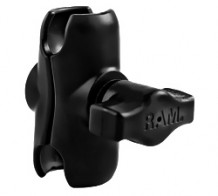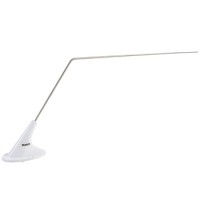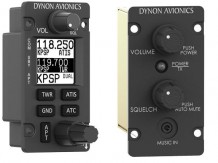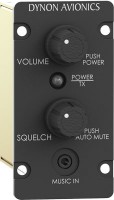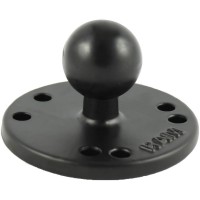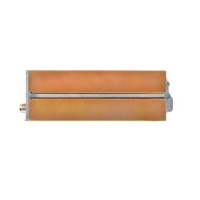1-877-795-2278 | info@aircraftspruce.ca
Aircraft Spruce Canada
Brantford, ON Canada
Corona, CA | Peachtree City, GA
Chicago, IL | Wasilla, AK
Aircraft Spruce Canada
Brantford, ON Canada
Corona, CA | Peachtree City, GA
Chicago, IL | Wasilla, AK
FREE SHIPPING ON ORDERS OVER $699 (SOME EXCLUSIONS APPLY) | 877-795-2278
Trig TY92 Remote Radio FAA-TSO
$5538.00/Each
Part# 11-16850
MFR Model# 00881-00-01
MFR Model# 00881-00-01
Overview
|
Trig’s compact radio is the ideal retro-fit that can be installed in the smallest panel. The TY92 is certified and highly capable. Easy to use and faster to tune, it takes up minimal space and weight. The unique ‘Push Step’ feature provides the fastest in class frequency selection. Dual Watch allows you to monitor two channels at the same time – it’s like having two radios in one. (Control Head not included)
Compatibility with various EFIS systems enables remote control of the TY92 radio – it can even populate the on-route frequency from a connected GPS. A memory function and built-in intercom, with mic gain adjustment on each headset, demonstrates just how much we’ve packed into our certified compact radios. |
Features
Product Features:With a crisp clear display and simple user interface the Trig radio benefits from some great features; ‘Dual Watch’ feature allows monitoring of two frequencies at the same time. There are 9 pre-set channel memories which are easily selectable.
Trig’s compact radio is EASA ETSO and FAA TSO approved so it can be used worldwide. Our ‘Push Step’ feature enables the fastest tuning in its class – three times faster than in an 8.33 environment! For customers who do not require 8.33 channel spacing this feature can be disabled, allowing speedy selection between 50 kHz and 25 kHz spacing. This enables rapid change of frequency whilst providing fine tuning in 25 kHz steps if required.
Trig radios also feature a built-in high quality two place intercom with an aux-input, saving further cost and weight.
GPS Compatibility:The radio can integrate with popular GPS units; this allows the automatic display of en-route radio frequencies. Control of the radio via an EFIS display is also possible using industry standard SL40 and GTR225 protocols. This unique capability integrates your Trig radio with other avionics and provides real user flexibility.
Product Design:The innovative use of a control head and separate radio hardware unit provides more installation options, especially when space is at a premium. The control head can be conveniently mounted in a full 57mm (2 ¼”) round hole or even smaller compact mount. Fitting is straightforward, and once installed the depth of the radio control head is only 74mm (3”). In practice this means that the Trig compact control head can be located in an aircraft instrument panel where a ‘single box’ radio will simply not fit. The compact radio is the perfect comms partner to our compact transponder Mode S (1090 ES ADS-B Out transponders).(Control Head not included)
Push Step:The compact radio display is clear and bright, showing both primary and secondary frequencies. A ‘Push Step’ knob allows the fastest change from 8.33 kHz to 25 kHz – so you can tune the radio quickly without compromising your look-out. The Dual Watch feature allows two frequencies to be monitored at the same time – it’s like having two radios in one.
Headsets:The Trig compact radio two place intercom is optimized for use with standard aviation headsets – a number of adjustments allow the radio to be used successfully in noisy aircraft. The compact radio also has a built in speaker amplifier that can drive an external speaker, this is preferred by some glider pilots. If using a dynamic microphone with a Trig radio please note an amplified adapter will be required.
Specifications
| Specification | TY92 |
|---|---|
| Type | Receiver- Class C. Class E. Transmitter- Class 3, Class 5 |
| Certification | ETSO-2C169a, ETSO-2C128, TSO-C169a, TSO-C128a |
| Compliance | ED-23C, ED-67, DO-186B, DO-178B Level B, DO-160F, DO-254 Level C |
| Supply Voltage (DC) | 22 – 33 V |
| Typical Current Consumption (at 14v) | (at 28V) receive: 130 mA transmit: 2.5A |
| Nominal Transmitter Power | 16 Watt |
| Operating Temperature | for the radio unit -40 °C to + 70 °C for the controller -20 °C to +70 °C |
| Cooling Requirement | No fan required |
| Weight | 460 grams / 1.01 lbs |
| Dimensions (mm) | controller: H 44 x W 63 x D 35 mm (74 mm depth in panel with D-Type connector fitted). radio unit: H 48 x W 66 x L 160 mm (inc. socket). |
| Dimensions (inches) | controller: H 1.73 x W 2.48 x D 1.37 inches (Depth 3 inches with D-Type connector fitted). radio unit: H 1.88 x W 2.59 x L 6.29 inches (inc. socket) |
Documents
Q&A
Please note, Aircraft Spruce Canada's personnel are not certified aircraft mechanics and can only provide general support and ideas, which should not be relied upon or implemented in lieu of consulting an A&P or other qualified technician. Aircraft Spruce Canada assumes no responsibility or liability for any issue or problem which may arise from any repair, modification or other work done from this knowledge base. Any product eligibility information provided here is based on general application guides and we recommend always referring to your specific aircraft parts manual, the parts manufacturer or consulting with a qualified mechanic.

 Aircraft Spruce Canada
Aircraft Spruce Canada









